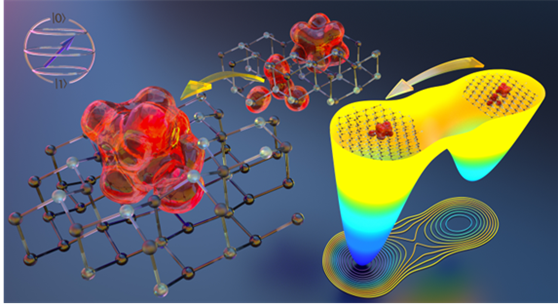To build and deploy large-scale quantum computers, researchers need to know how to control quantum bits, or qubits, made of materials with stable electronic properties. At the Department of Energy’s Midwest Center for Computational Materials (MICCoM), Argonne National Laboratory and University of Chicago researchers conducted materials simulations using a neural network-based sampling technique. Their results suggest that a leading semiconductor candidate for qubits, silicon carbide (SiC), is indeed a promising material, with long qubit coherence times and all-optical spin initialization and read-out capabilities. These advances will help the design and fabrication of spin-based qubits with atomic precision in semiconductor materials, ultimately accelerating the development of next-generation large-scale quantum computers and quantum sensors.
June 2024
Qubits, bit by bit
Scientists simulate quantum properties in a widely used semiconductor material.
